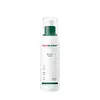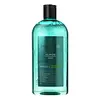What's inside
What's inside
 Key Ingredients
Key Ingredients

 Benefits
Benefits

 Concerns
Concerns

 Ingredients Side-by-side
Ingredients Side-by-side

Water
Skin ConditioningPropanediol
SolventButylene Glycol Dicaprylate/Dicaprate
EmollientMethylpropanediol
SolventTriethylhexanoin
MaskingNiacinamide
SmoothingArachidyl Alcohol
EmollientPanthenol
Skin ConditioningVinyldimethicone
Behenyl Alcohol
Emollient1,2-Hexanediol
Skin ConditioningGlyceryl Stearate Se
EmulsifyingPotassium Cetyl Phosphate
EmulsifyingPolyglyceryl-2 Stearate
EmulsifyingArachidyl Glucoside
EmulsifyingGlyceryl Glucoside
HumectantPolyacrylate Crosspolymer-6
Emulsion StabilisingAmmonium Acryloyldimethyltaurate/Vp Copolymer
Caprylyl Glycol
EmollientCetearyl Olivate
Cetearyl Alcohol
EmollientGlyceryl Stearate
EmollientStearyl Alcohol
EmollientSorbitan Olivate
EmulsifyingHydrogenated Lecithin
EmulsifyingGlycerin
HumectantTocopherol
AntioxidantEthylhexylglycerin
Skin ConditioningFructan
Skin ConditioningCeramide NP
Skin ConditioningAdenosine
Skin ConditioningGluconolactone
Skin ConditioningDisodium EDTA
Glucose
HumectantPolyglyceryl-3 Distearate
EmulsifyingCholesterol
EmollientCentella Asiatica Extract
CleansingPalmitic Acid
EmollientGlyceryl Stearate Citrate
EmollientDipeptide-2
Skin ConditioningMadecassoside
AntioxidantMadecassic Acid
Skin ConditioningAsiaticoside
AntioxidantAsiatic Acid
Skin ConditioningBenzyl Glycol
SolventHydrolyzed Glycosaminoglycans
HumectantStearic Acid
CleansingMyristic Acid
CleansingSodium Hyaluronate
HumectantSodium Hyaluronate Crosspolymer
HumectantHydrolyzed Hyaluronic Acid
HumectantHydroxypropyltrimonium Hyaluronate
Hyaluronic Acid
HumectantSodium Acetylated Hyaluronate
HumectantWater, Propanediol, Butylene Glycol Dicaprylate/Dicaprate, Methylpropanediol, Triethylhexanoin, Niacinamide, Arachidyl Alcohol, Panthenol, Vinyldimethicone, Behenyl Alcohol, 1,2-Hexanediol, Glyceryl Stearate Se, Potassium Cetyl Phosphate, Polyglyceryl-2 Stearate, Arachidyl Glucoside, Glyceryl Glucoside, Polyacrylate Crosspolymer-6, Ammonium Acryloyldimethyltaurate/Vp Copolymer, Caprylyl Glycol, Cetearyl Olivate, Cetearyl Alcohol, Glyceryl Stearate, Stearyl Alcohol, Sorbitan Olivate, Hydrogenated Lecithin, Glycerin, Tocopherol, Ethylhexylglycerin, Fructan, Ceramide NP, Adenosine, Gluconolactone, Disodium EDTA, Glucose, Polyglyceryl-3 Distearate, Cholesterol, Centella Asiatica Extract, Palmitic Acid, Glyceryl Stearate Citrate, Dipeptide-2, Madecassoside, Madecassic Acid, Asiaticoside, Asiatic Acid, Benzyl Glycol, Hydrolyzed Glycosaminoglycans, Stearic Acid, Myristic Acid, Sodium Hyaluronate, Sodium Hyaluronate Crosspolymer, Hydrolyzed Hyaluronic Acid, Hydroxypropyltrimonium Hyaluronate, Hyaluronic Acid, Sodium Acetylated Hyaluronate
Ingredients Explained
These ingredients are found in both products.
Ingredients higher up in an ingredient list are typically present in a larger amount.
Glycerin is already naturally found in your skin. It helps moisturize and protect your skin.
A study from 2016 found glycerin to be more effective as a humectant than AHAs and hyaluronic acid.
As a humectant, it helps the skin stay hydrated by pulling moisture to your skin. The low molecular weight of glycerin allows it to pull moisture into the deeper layers of your skin.
Hydrated skin improves your skin barrier; Your skin barrier helps protect against irritants and bacteria.
Glycerin has also been found to have antimicrobial and antiviral properties. Due to these properties, glycerin is often used in wound and burn treatments.
In cosmetics, glycerin is usually derived from plants such as soybean or palm. However, it can also be sourced from animals, such as tallow or animal fat.
This ingredient is organic, colorless, odorless, and non-toxic.
Glycerin is the name for this ingredient in American English. British English uses Glycerol/Glycerine.
Learn more about GlycerinWater. It's the most common cosmetic ingredient of all. You'll usually see it at the top of ingredient lists, meaning that it makes up the largest part of the product.
So why is it so popular? Water most often acts as a solvent - this means that it helps dissolve other ingredients into the formulation.
You'll also recognize water as that liquid we all need to stay alive. If you see this, drink a glass of water. Stay hydrated!
Learn more about Water